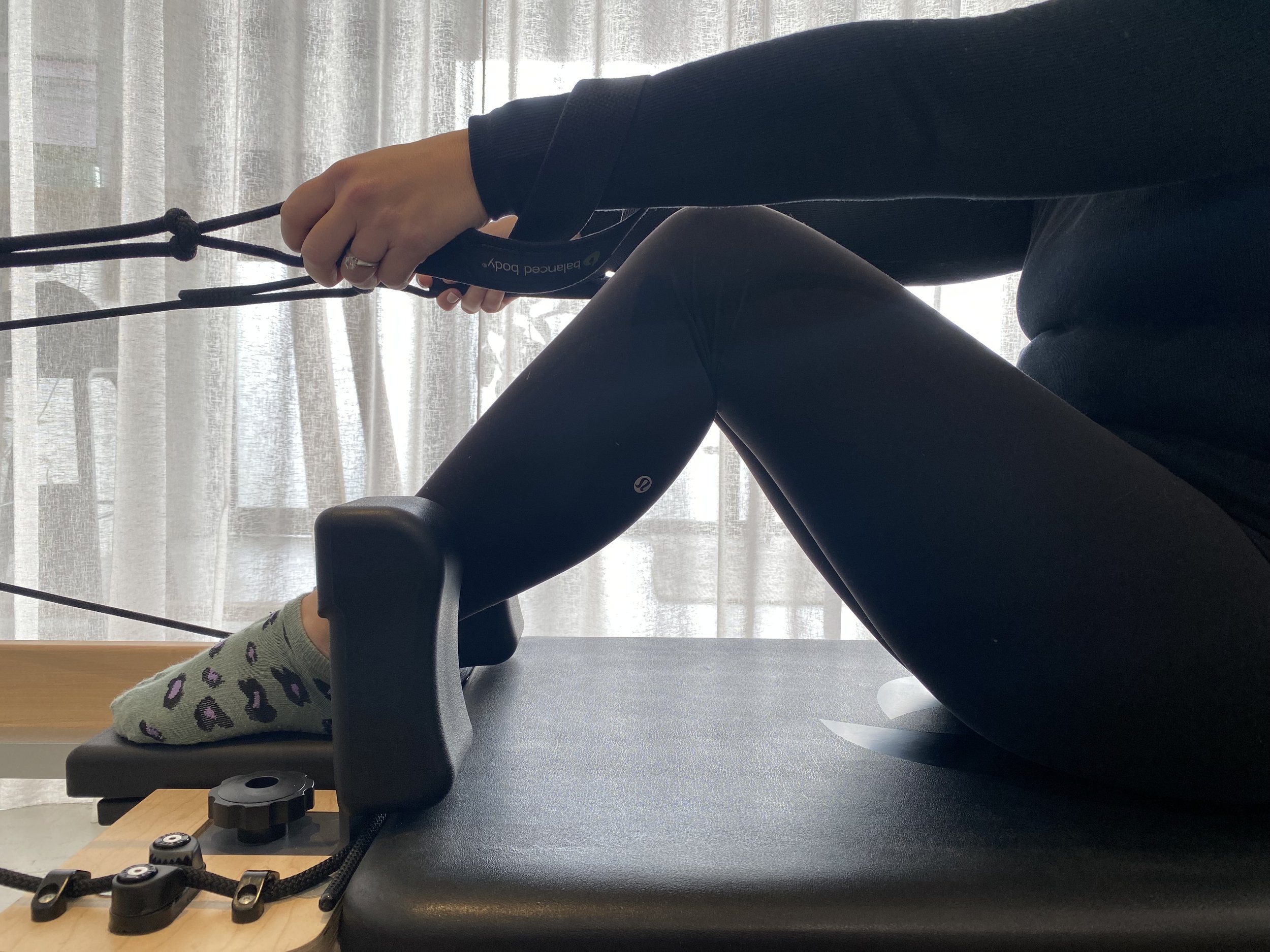I’ve spent nine years in small business in the hopes of sharing the benefits of Pilates as an adaptable exercise modality because I’ve seen and experienced the impact it can have over and over again. A regular Pilates practice has the power to transform how you move, how you feel, to reduce pain, and contribute to a more healthy lifestyle overall.
Whether you’re curious about Pilates classes for strength and conditioning or more specifically Pilates for rehabilitation or for managing a chronic health condition, the chances are you’ve done some Googling, and if not, let me tell you it’s a minefield.
The Pilates industry is largely unregulated with lot’s of studios operating on minimal qualifications, and a poor understanding of the human body, injuries and how to avoid harm- and it can be tricky to know what constitutes a good teacher when everyone out there is so confident in their ability to deliver a high quality Pilates experience, and that their classes are “the best Pilates classes in Sydney'“
There’s no one studio to fit all- BUT there are some Pilates red flags that beginners should watch out for- I got to thinking about the best advice I could give to someone who’s a beginner in Pilates and seeking a studio to join…and this is what I came up with…
Skilled Teachers Are Trained Through a Registered Training Organisation
Not all Pilates instructors are created equal. In Australia, the most skilled Pilates teachers have gone through extensive training with a Registered Training Organisation (RTO). Their training includes hundreds of hours of observation, self practice and apprentice teaching- and as a former mentor on one of these courses let me tell you they are HARD- a weekend course or online course just does not compare. Skilled, comprehensively trained Pilates teachers not only know and understand the Pilates exercises, and the Pilates machines, they also understand human physiology, biomechanics, and how to safely adapt the Pilates work to different people with different abilities, restrictions, requirements, and SO much more.
**Beginners should look for a Pilates studio that displays their teachers' bios and qualifications on their website. If you can’t read about their Pilates teachers qualifications, it’s a red flag. Also look out for a studio that prioritises learning and ongoing education to upskill their team.
Reformer Pilates is NOT your Only Option
Group Reformer Pilates classes have become incredibly popular in the last 5-10 years and while we offer them at RFM- they’re not the only way of learning Pilates: there are two main categories of Pilates classes:
~ The first is Group Pilates Classes: These encompass a group of people moving together in unison along to the teachers verbal guidance (and sometimes demonstration). Group Pilates classes can have any number of people in them (we cap ours at 6, but you might see classes of over 20), and can be done on the mat, reformer, and nowadays even the Pilates Chair and Pilates Tower. Exercises flow from one to the other with limited time for individual feedback, questions or modifications. (The bigger the group the less individual assistance given.)
~ On the other hand there’s Personalised Studio Sessions (also known as Clinical Pilates or Equipment Pilates). These appointment based Pilates sessions utilise all of the Pilates machines, and the full skillset of your teacher who designs a Pilates class specifically for your body and needs. After a movement assessment in an initial consultation you can opt to work with the teacher one on one (private pilates), with a partner (duet pilates), or share the teachers time in a semi private (we cap ours at 3, but you might find semi-privates with up to 5 people). The personalised nature of these sessions make them accessible to folks with more limited mobility, a chronic health condition, pain to troubleshoot, or people who want more than just verbal guidance (the ideal Pilates classes for hypermobility and neurodivergents- we see you!)
**Beginners- you should consider whether you’re happy to move in unison with a group or whether your body or learning style requires something more tailored. Then think about whether you’d like the support of the Pilates equipment, or are happy on the mat. Finally you should consider how many people you’re comfortable sharing that class/session with- how many is going to feel like too many?
Core Work is NOT What You Think
Whether a beginner in the Pilates world or not- most people understand Pilates to be synonymous with building core strength, but lots of people confuse this with endless crunches or abdominal exercises that really only work the superficial abdominal muscles (think six pack muscles). But better core strength is about finding connection and building strength in the deep muscles that support your spine, pelvis and thorax, leading to more efficient, controlled and balanced movement, and less tension, aches and pains in the bigger muscles of the body. The core is made up of more than just the abdominals: the diaphragm, pelvic floor and deep spinal muscles called multifidus are also integral to good core function, therefore core work is about lots more than just your abdominal exercises. Strengthening your core doesn’t happen by simply ‘pulling your tummy in’ or tensing your abdominals- it’s much more nuanced than that, and building strength can be a different experience for different people. I won’t bang on about it here, but i do love talking about this stuff- and you can read more here.
** If your teacher is asking you to pull your abs in, and tighten your belly or waist, consider switching to a teacher or studio who instead challenges your concentration and coordination, cues your breathing and detailed alignment- that’s when you know they’re teaching in a way that trains your core to be reflexive and automatic.
Reaping the benefits means attending frequently and consistently
One-off classes are a nice treat, and no doubt you’ll feel the immediate benefits and float out the door after class. Whether you choose personalised Pilates sessions (clinical pilates), or group reformer Pilates, if you’re not attending a minimum of once per week then you won’t see any long term benefits.
People often ask what the best number of classes is, and of course the more Pilates you do the more impactful each class becomes- the benefits grow exponentially the more often you practise. However it’s really more about what you can commit to consistently over a long period of time- the magic of Pilates happens when it becomes a regular part of your routine, not just an occasional activity.
** Beginners should ask themselves: what can I commit to every week, and start with that. From there you build, it’s a marathon, not a sprint.
Look Beyond Pricing
To a certain extent we are all limited by budget, BUT regardless of which Pilates class format you choose you should always look beyond the price list. Look at all the things I’ve mentioned above: class format, access to Pilates equipment, how many people you’ll be sharing with, and teacher qualifications and training. Cheap is great for the bank account but if it means you’re in a group class of more than12 or 15- does that still work for you? Or if you’ve chosen semi private Pilates, do you want to share with 4 other people instead of 2, just to save $5?
**The bottom line is that you get what you pay for. If you look for the lowest cost Pilates classes in the area then you’re not likely to be signing up for the best teaching experience or smallest classes. Think about what’s going to make it worthwhile for you and find a studio that can match your needs AND your budget.
If you’re just starting out in the Pilates world, I hope this has been helpful in some way for you. If you’ve got specific questions about how we do things at Room for Movement you can check out some FAQs here, or read more about our group classes and personalised sessions. I also love a chat and am happy to answer any questions directly via email so ask away!




